FPV drone flying, also known as First-Person View drone flying, is an exhilarating and immersive way to experience remote-controlled flight. Unlike traditional camera drones that provide an aerial perspective through a monitor or smartphone screen, FPV drone flying allows pilots to see the world from the drone’s perspective in real-time, as if they were sitting inside the cockpit.
Whether you’re a thrill-seeker, an aspiring aerial photographer, or a racing enthusiast, FPV drone flying opens up a whole new world of possibilities.
But what exactly is an FPV drone flying? How does it work, and what are the benefits of it?
In this blog, we’ll dive into the exciting realm of FPV drones and will know everything about it.
How FPV Drones Work
At the core of an FPV drone is the FPV camera, which is strategically positioned on the drone’s frame.
This camera captures high-quality video in real-time, transmitting it wirelessly to the pilot’s FPV goggles.
The video transmission relies on a transmitter and receiver system, where the camera’s feed is sent via radio waves to the pilot’s goggles, enabling a live view of the drone’s surroundings.
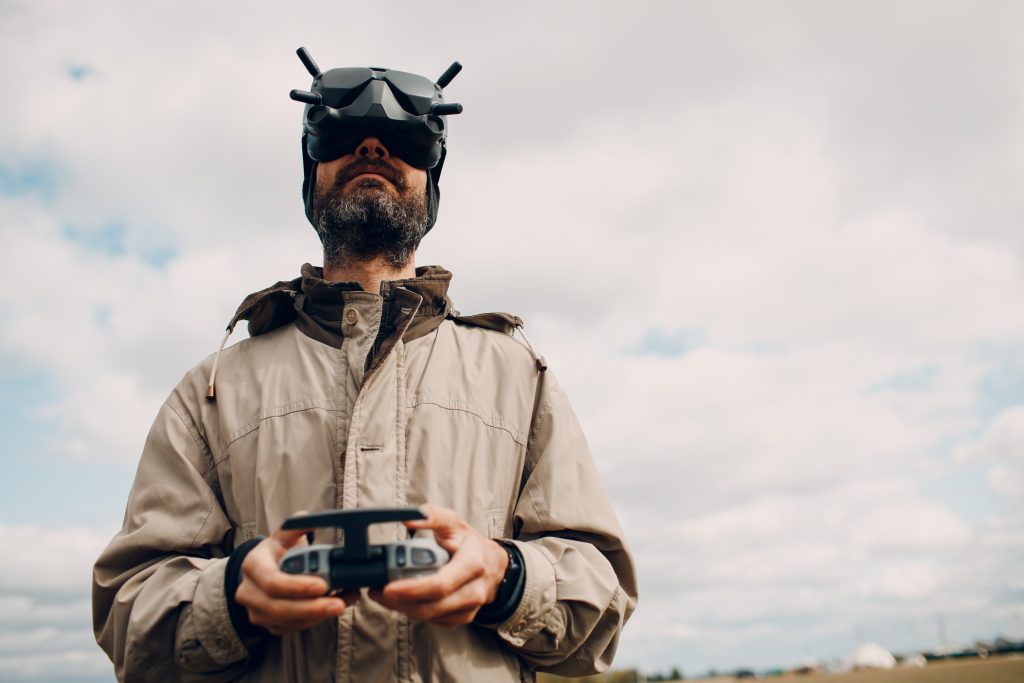
The fpv pilot wears the FPV goggles, which resemble a pair of virtual reality goggles. These goggles are equipped with a built-in display that receives and displays the live video feed from the drone’s camera.
By wearing the goggles, the pilot is fully immersed in the flight experience, seeing what the drone sees as if they were onboard.
To control the drone’s movements, the fpv pilot uses a radio transmitter. This transmitter sends signals to a receiver on the drone, translating the pilot’s commands into actions.
The receiver relays these commands to the flight controller, which acts as the drone’s “brain.” The flight controller processes the commands, adjusting the motor speeds and control surfaces to achieve the desired movements.
In summary, FPV drones work by combining a dedicated FPV camera, wireless video transmission, FPV goggles, and a radio transmitter-receiver fpv system. This setup allows pilots to view the drone’s surroundings in real-time and maneuver it with precision.
With the ability to fly through challenging obstacles or capture stunning aerial footage, FPV drones offer an unparalleled and immersive flight experience.
Equipment you Need to Become an FPV Drone Pilot
To become an FPV drone pilot, you’ll need a specific set of equipment.
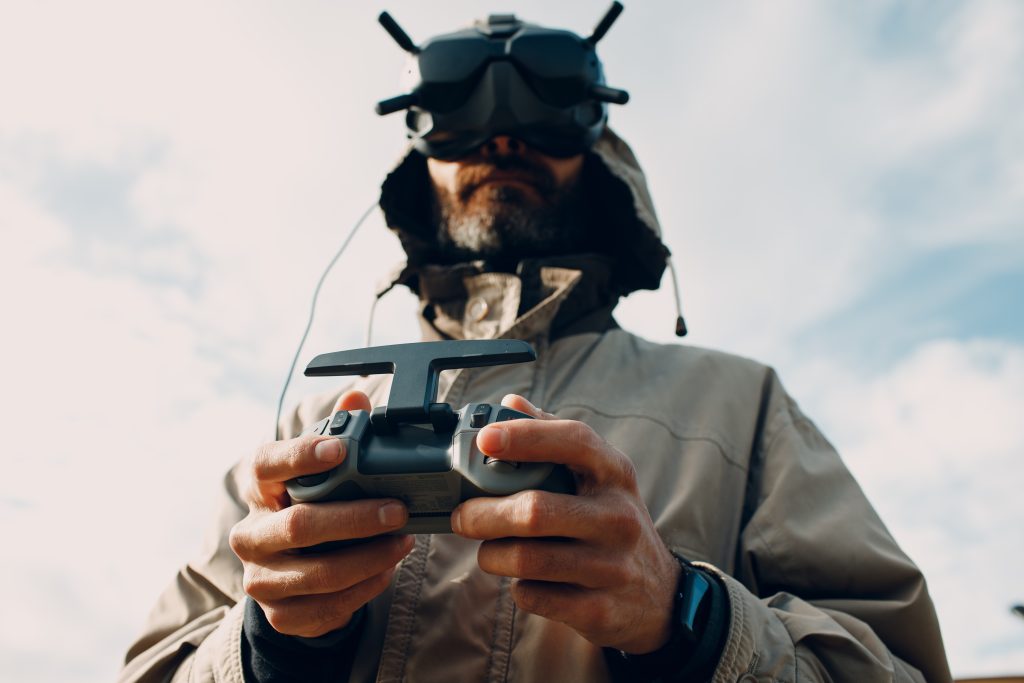
Here are the essential components you’ll need to get started:
- FPV Drone: The first and most crucial piece of equipment is, of course, the FPV drone itself. Look for a drone specifically designed for FPV flying, which typically includes a built-in FPV camera and compatible components for a smooth and immersive experience.
- FPV Goggles: FPV goggles are specialized goggles worn by the pilot to view the live video feed transmitted from the drone’s camera.
These goggles feature built-in displays and receivers to receive video transmission in real-time.
Look for goggles with good image quality, comfortable fit, and adjustable settings for optimal viewing experience. - Radio Transmitter and Receiver: A radio transmitter, also known as a remote controller, is used to send control signals to the drone.
- It’s essential to choose a transmitter that is compatible with the receiver on your drone. Look for a transmitter with a reliable signal range, ergonomic design, and customizable settings.
- Batteries and Chargers: FPV drones are powered by batteries, so it’s crucial to have an adequate supply of batteries and a compatible charger.
Consider investing in multiple batteries to extend your flying sessions.
Look for high-quality lithium polymer (LiPo) batteries that offer a good balance between weight and power. - FPV Camera and VTX: While most FPV drones come with an integrated FPV camera, you may want to upgrade or customize your camera setup for specific requirements.
Additionally, you’ll need a Video Transmitter (VTX) to transmit the live video feed from the camera to your goggles. - Antennas: Antennas play a critical role in ensuring a reliable video transmission between the drone and your goggles. Consider investing in high-quality circular polarized antennas (CP antennas) for optimal signal strength and reception.
- Battery Straps and Mounts: To securely attach the battery to your drone, you’ll need battery straps or mounts. These accessories ensure that the battery remains firmly in place during flight, preventing any movement that could affect the drone’s balance and performance.
- Tools and Maintenance Equipment: As an FPV drone pilot, it’s essential to have a set of basic tools for maintenance and repairs. These may include screwdrivers, pliers, soldering equipment, and spare parts such as propellers and motors.
Remember that safety should be a priority, so also consider investing in propeller guards, a fireproof LiPo bag for battery storage, and appropriate protective gear such as goggles with face foam and safety glasses.
As you progress in your FPV drone flying journey, you may choose to upgrade or customize various components to suit your preferences and flying style.
It’s crucial to research and choose reliable and compatible equipment from reputable manufacturers to ensure a smooth and enjoyable FPV flying experience.
Regular Camera Drones VS FPV Drones
Here’s a table highlighting the key differences between regular camera drones and FPV drones:
| Aspect | Regular Camera Drones | FPV Drones |
|---|---|---|
| Flight Experience | Observe and control from a third-person perspective | Immersive first-person view from the drone’s POV |
| Camera Capability | High-resolution cameras for photography/videography | FPV camera optimized for real-time video transmission |
| Piloting Style | Stable and smooth flight for capturing steady shots | Agile and dynamic flight for racing and acrobatics |
| Flight Range | Extended range for exploring larger areas | Typically shorter range for proximity flying |
| Battery Life | Longer flight time for extended aerial coverage | Shorter flight time due to high-speed maneuvers |
| Cost | Affordable options available for various budgets | Can be more expensive due to specialized components |
| Purpose | Aerial photography, videography, inspections | Racing, freestyle flying, aerial cinematography |
| Video Transmission Delay | Minimal latency for smooth video streaming | Minimal latency for real-time FPV experience |
| Skill Requirement | Suitable for beginners with user-friendly controls | Requires practice and piloting skills development |
| Regulatory Considerations | Must comply with local drone regulations | Must comply with local drone regulations |
Please note that while these are general differences, there can be variations and overlap depending on the specific models and configurations of drones available in the market.
Uses of FPV Drones
FPV drones, or First-Person View drones, have a wide range of applications across various industries and recreational activities.
These versatile machines have unlocked new possibilities for aerial exploration, photography, entertainment, and more.
Let’s dive into some of the key uses of FPV drones and how they are transforming different fields.
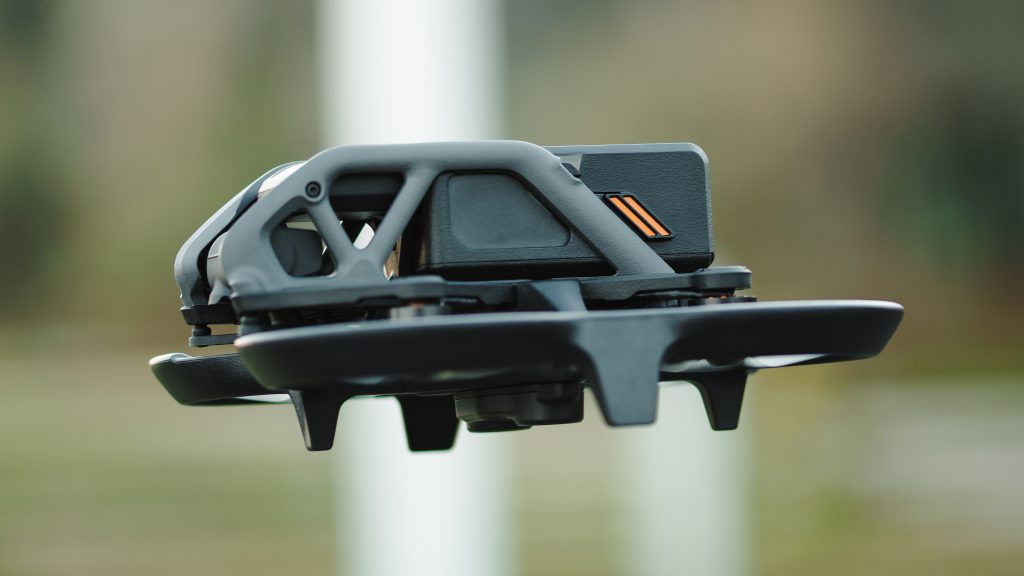
Aerial Photography and Cinematography
FPV drones have opened up new possibilities for capturing breathtaking aerial footage. With their agile flight capabilities and live first-person view, they provide a unique perspective for aerial photographers and cinematographers.
FPV drones allow professionals and enthusiasts to capture dynamic shots and creative angles that were once only possible with costly equipment or manned aircraft.
Whether it’s filming action sequences, music videos, or capturing stunning landscape photography, FPV drones offer an exciting tool for creative expression.
Racing and Freestyle Flying
FPV drone racing has surged in popularity as an exhilarating and competitive sport.
Pilots fly their drones through challenging courses, competing for speed, precision, and agility.
The immersive first-person view and high-speed capabilities of FPV drones create a thrilling experience for both pilots and spectators.
Additionally, freestyle flying allows pilots to unleash their creativity, performing acrobatic maneuvers and showcasing their piloting skills.
Search and Rescue Operations
FPV drones play a vital role in search and rescue missions.
Equipped with live video feeds and agile flight capabilities, these drones can navigate challenging terrains and inaccessible areas.
They provide valuable visual information to rescue teams, aiding in locating missing persons, assessing disaster-affected areas, and even delivering essential supplies or communication devices to those in need.
Industrial Inspections and Surveys
FPV drones are increasingly used for industrial inspections and surveys. Their maneuverability and ability to access difficult-to-reach areas make them highly efficient tools for inspecting infrastructure, such as power lines, wind turbines, or pipelines.
FPV drones equipped with high-resolution cameras can capture detailed imagery, allowing inspectors to identify potential issues or damages without the need for costly and time-consuming manual inspections.
Entertainment and Events
FPV drones have become popular in the entertainment industry, captivating audiences with aerial displays and light shows.
These drones can be programmed to perform synchronized flights, creating mesmerizing patterns and formations in the night sky.
FPV racing events also attract audiences who enjoy the adrenaline and excitement of high-speed competitions.
Personal Recreation and Hobby
FPV drones have captured the imagination of hobbyists worldwide. They provide a thrilling and immersive flying experience, allowing enthusiasts to explore their surroundings, perform acrobatic maneuvers, and push the boundaries of their piloting skills.
So, FPV drone flying has become a popular recreational activity, offering endless possibilities for personal enjoyment and creativity.
Benefits of Flying FPV Drones
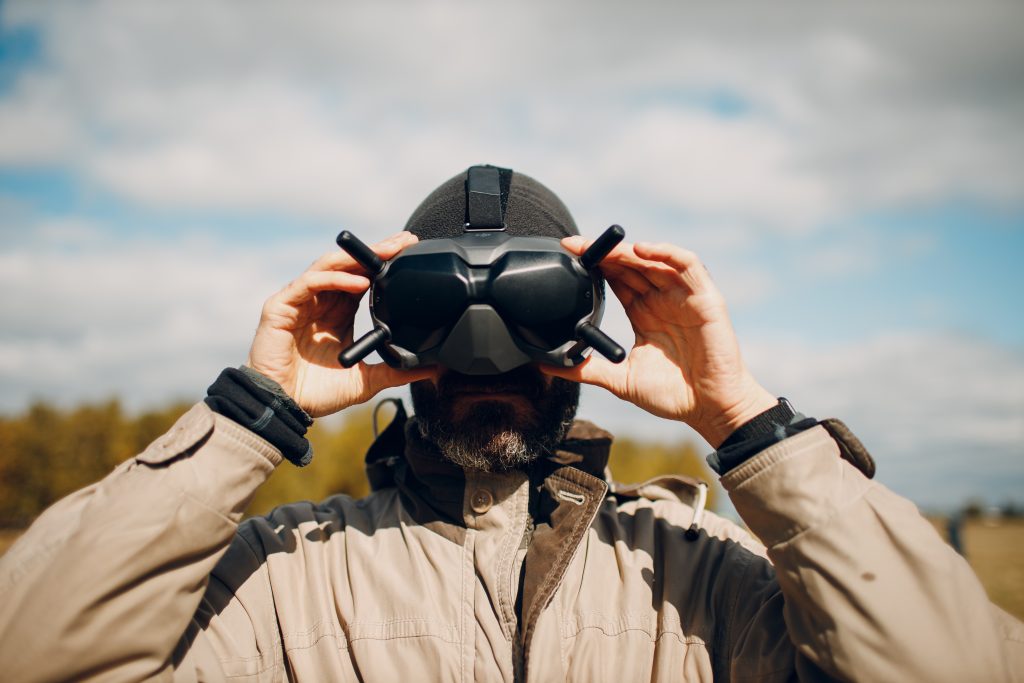
Flying First Person View (FPV) drones can offer a range of benefits and unique experiences for drone enthusiasts. Here are some of the key advantages of flying FPV drones:
Immersive Flight Experience
One of the most significant benefits of flying FPV drones is the immersive flight experience it offers.
With FPV goggles on, you see what the drone sees in real-time, giving you the sensation of being in the cockpit.
This first-person view allows you to fully immerse yourself in the flight, enhancing the excitement and thrill of flying.
Real-Time Feedback and Agility
FPV drones provide immediate feedback to your control inputs. This real-time response allows for precise control and agility in maneuvering the drone.
You can navigate through tight spaces, perform acrobatic tricks, and execute intricate flight patterns with greater accuracy and responsiveness.
Enhanced Creativity and Artistic Expression
FPV drones open up new creative possibilities for aerial photography and cinematography.
With the ability to fly from a first-person perspective, you can capture unique angles and perspectives that were once only possible with manned aircraft or expensive equipment.
FPV drones allow you to unleash your creativity and capture stunning shots that stand out from traditional aerial photography.
Competitive Racing Opportunities
FPV drone racing has emerged as a popular sport, offering exciting competitive opportunities.
Racing leagues and competitions are organized worldwide, providing pilots with the chance to showcase their skills, compete against others, and experience the adrenaline rush of high-speed racing.
FPV drone racing combines skill, strategy, and precision, creating a thrilling and engaging experience for both pilots and spectators.
Unique Perspectives in Aerial Photography
FPV drones provide a fresh and unique perspective in aerial photography. With their ability to fly at low altitudes and maneuver in various directions, FPV drones offer an unconventional view of landscapes, cityscapes, and other subjects. This allows photographers and cinematographers to capture shots that are more dynamic and captivating, setting their work apart from traditional aerial photography.
Skill Development and Learning
Flying FPV or first person view drones requires learning and developing piloting skills.
As you progress, you’ll enhance your hand-eye coordination, spatial awareness, and decision-making abilities.
FPV flying provides a challenging yet rewarding learning experience that improves your overall conventional drone piloting skills, making you a more capable and confident drone operator.
Drawbacks of FPV Drones
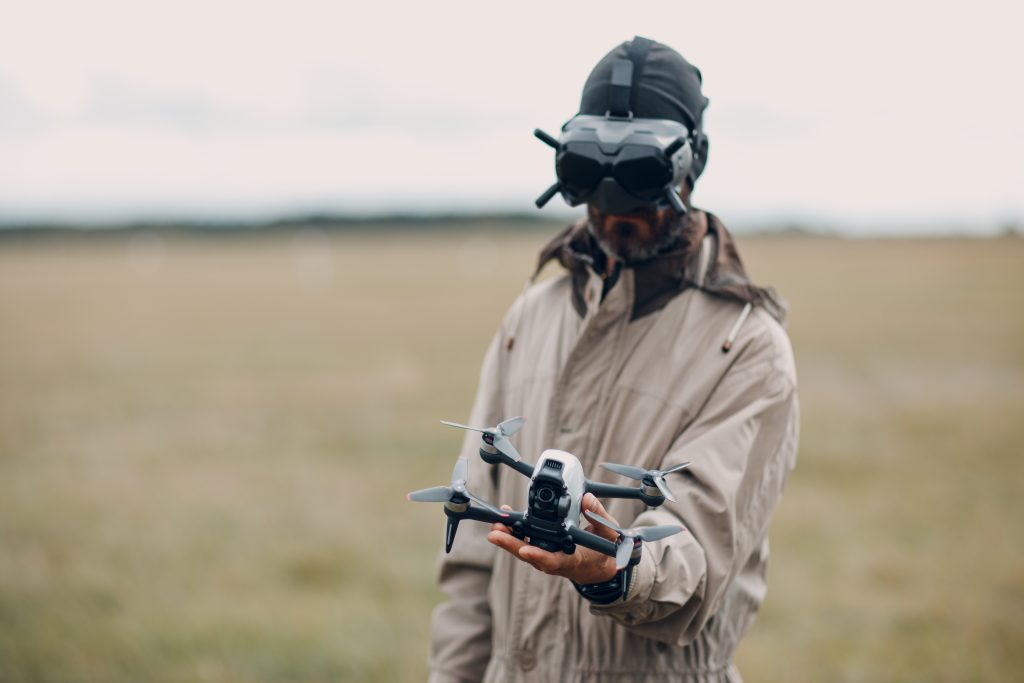
While FPV drone flying offers exciting experiences and benefits, it also comes with some drawbacks and challenges.
Here are some of the drawbacks of FPV drones:
Steeper Learning Curve
FPV drone flying has a steeper learning curve compared to traditional camera drones. It requires time and practice to master the hand-eye coordination, flight controls, and maneuvering techniques needed for precise control.
Beginners may find it challenging initially, and crashes or accidents can be more frequent during the learning process.
Limited Flight Time and Battery Life
FPV drones typically have shorter flight times compared to camera drones.
The high-speed flight, rapid maneuvers, and power-hungry components can drain the battery quickly. This means you may need to carry multiple batteries or have access to charging facilities for extended flight sessions.
Higher Risk of Crashes and Potential Damage
Due to the fast-paced and agile nature of FPV flying, there is an increased risk of crashes and potential damage to the drone.
Pilots need to be prepared for the possibility of accidents, which may result in repairs, part replacements, or even the loss of the drone in extreme cases.
Regulatory Restrictions and Legal Considerations
FPV drone flying is subject to regulations and legal restrictions in many regions.
Pilots must adhere to specific rules regarding flight altitudes, airspace restrictions, and privacy concerns.
It is crucial to stay informed about traditional drone regulations and obtain any necessary permits or licenses to fly legally and responsibly.
Visual Limitations
While FPV goggles provide an immersive experience, they limit your direct vision of the surrounding environment. This can make it challenging to spot obstacles or hazards outside the camera’s field of view.
Pilots must rely heavily on the live video feed and maintain situational awareness to ensure safe and controlled flight.
Equipment and Maintenance Costs
Compared to traditional camera drones, FPV drones can be more expensive due to the specialized components required for the first-person view experience.
FPV goggles, FPV cameras, video transmitters, and receivers can add to the overall cost of the setup.
Additionally, there may be ongoing maintenance and repair costs associated with flying FPV drones, especially if crashes or accidents occur.
It’s important to note that while these drawbacks exist, they can be mitigated with proper training, practice, and responsible flying practices.
With time and experience, pilots can overcome the challenges and fully enjoy the benefits of flying FPV drones.
Conclusion
FPV drone flying is a captivating and exhilarating activity that has taken the world of unmanned aerial vehicles by storm. It offers an immersive flight experience, allowing pilots to see and control the drone from a first-person perspective.
Through FPV goggles, they can soar through the skies, perform acrobatic maneuvers, capture breathtaking aerial footage, or compete in thrilling races.
The technology behind FPV drone flying is remarkable. FPV cameras, video transmitters, receivers, and specialized goggles come together to create a seamless real-time connection between the pilot and the drone.
This immersive experience offers a level of excitement and engagement that goes beyond traditional camera drones.
As FPV drone flying grows in popularity, it is important to emphasize responsible flying practices. Pilots must adhere to local regulations, respect privacy concerns, and prioritize safety in every flight.
Ongoing education, training, and awareness of best practices contribute to the continued growth and positive impact of FPV drone flying.
Finally, FPV drone flying is an exciting and immersive experience that allows pilots to see the world from a whole new perspective.
Whether you’re capturing stunning aerial footage, competing in thrilling races, or exploring new frontiers, FPV drones offer endless possibilities for adventure, creativity, and enjoyment.
I hope this blog post answered your question on what is fpv drone flying and everything that comes with it.

